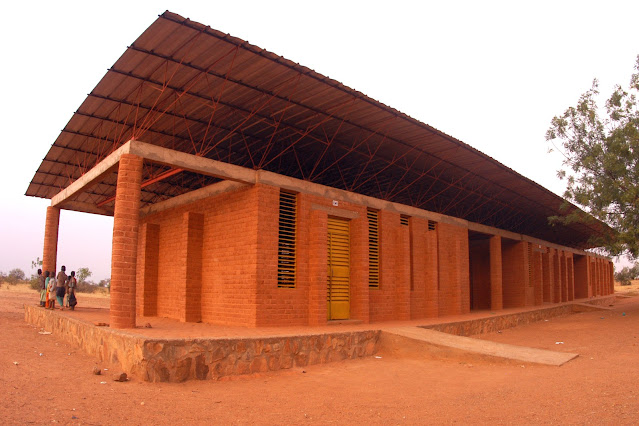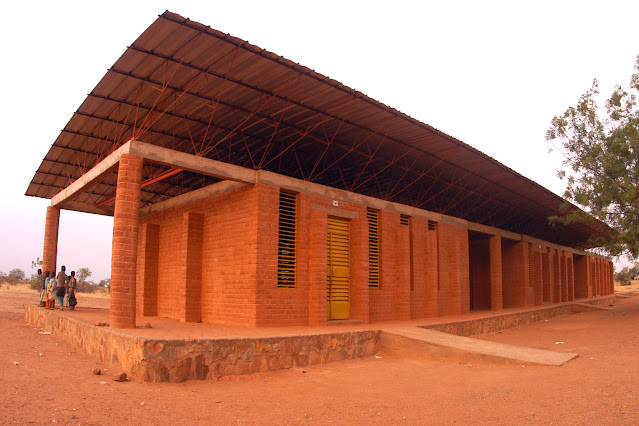KITCHEN INTERIOR DESIGN TRENDS FOR 2026
"After a long day at work, nothing feels better than having a relaxing space at home, and the kitchen is at the heart of that comfort. This desire for a soothing environment often leads us to prioritize our kitchen when planning upgrades or renovations. With the ever-evolving landscape of new appliances, design trends, and finishes, it’s essential to identify which kitchen design features will truly endure. So, what should you invest in for lasting value, and which items are better off being replaced?"
OBJECTIVE
In addition to my expertise in designing expansive food processing plants, I have also played a pivotal role in creating model kitchens for food outlets in shopping malls and various commercial establishments, all aimed at enhancing a food-based franchise business. My hands-on experience in food manufacturing projects early in my architectural career fueled my passion for curating these kitchen design trends.
I've noticed that the momentum generated by recent kitchen trends has persisted into this year. These trends highlight the importance of smart storage solutions, embrace natural-themed accents, and incorporate cutting-edge technology in fixtures, appliances, and lighting. The essence of organic style brings a touch of simple luxury to modern kitchen designs, while maximizing functionality remains at the forefront of renovations and updates. In this exploration, I want to shine a light on the significance of indoor plants, highlighted in Item 1, as I've been focusing on "biophilic design" in my recent posts. This trend is not only evolving kitchens but also influencing architectural elements across the board. By adopting these seven kitchen design trends, you can transform your kitchen into a space that not only meets your functional needs but also exudes lasting elegance and charm.
Here are seven kitchen design trends you may adapt for your homes this coming year:
1. BIOPHILIC DESIGN

One of the most effective ways to bring the benefits of nature into our daily lives is by incorporating plants into vacant spaces or shelves in kitchens, dining areas, and living rooms. Houseplants not only purify the air and enhance our mood, but their enduring popularity proves they are much more than a mere trend. They create an exquisite harmony with wooden finishes and furniture, adding warmth and vitality to any space.
Recent scientific research highlights the powerful impact that nature-based interventions can have on our overall health and well-being. It is essential for designers, architects, and urban planners to capitalize on this knowledge by fostering a stronger connection between people and nature. By integrating natural elements into our built environments, we honor a bond that has been ingrained in human evolution for centuries.
In our increasingly urbanized and technology-driven world, we find ourselves spending more time indoors than ever before. While modern buildings may offer efficiency and functionality, they often disconnect us from the natural world—something our bodies and minds deeply yearn for. This is where Biophilic Design becomes crucial, as it seeks to bridge that gap and promote a healthier, more connected lifestyle.
For further Readings on the subject of Biophilic Design:
BIOPHILIC DESIGN: Creating Green Buildings for Life (Part 1) | Architalktural
BIOPHILIC DESIGN: Creating Green Buildings for Life (Part 2) | Architalktural
BIOPHILIC DESIGN: Creating Green Buildings for Life (Part 3) | Architalktural
10 BEST AIR PURIFYING INDOOR PLANTS FOR BIOPHILIC DESIGN | Architalktural
2. NATURAL WOOD TONES
There is no doubt that natural wood is still a material of choice for most clients and home experts. Wood helps to provide organic vibes and a natural accent to the kitchen by connecting it to the outside environment. However, the trend does not actually allow the material to dominate the arena. To maintain a contemporary touch, wooden surfaces blend with granite working countertops.
3. DAYLIGHTING (NATURAL LIGHTING)
Natural lighting, or daylighting, is a transformative approach that utilizes sunlight to illuminate a building’s interior. Unlike artificial lighting, which can be energy-intensive and generate unwanted heat, natural lighting is a cost-effective, abundant, and eco-friendly solution. Thoughtful building design that prioritizes daylighting involves meticulous consideration of orientation, window placement, and architectural form. This strategy not only maximizes the benefits of natural light but also enhances the overall aesthetic of the space.
Additionally, based on my recent studies and articles, I believe that daylighting is becoming an essential trend in modern kitchen design. This style aligns perfectly with contemporary minimalist aesthetics. Imagine bright, airy kitchens featuring light-colored, low-VOC paints and expansive aluminum picture windows that flood the space with natural light, all while promoting energy efficiency and sustainability. Moreover, incorporating LED lighting for nighttime use is an excellent way to save energy and complement the natural ambiance created during the day. Embracing daylighting in kitchen design is not just a trend; it's a smart, sustainable choice for a brighter future.
4. GLASS CABINET DOORS
We can’t deny our deep appreciation for the timeless elegance of glass, which enhances every space—be it a home, office, or building facade. Have you noticed the trend? Glass doors are no longer limited to dining areas and terraces. Today, wooden or plain kitchen cabinets are increasingly adorned with stunning glass doors, especially frosted ones, adding a touch of sophistication while fulfilling both decorative and practical needs. Embrace this design choice and elevate your interiors!
5. VERSATILE SPLASHBACK MATERIALS
My early career has shaped what we now recognize as the traditional design trend, where the same materials were used for both countertops and walls. However, modern kitchens are evolving, showcasing separate materials for horizontal and vertical surfaces. Notably, glass or mirrors have emerged as elegant high-end choices for wall surfaces, enhancing the kitchen’s appearance and creating a sense of spaciousness. This innovative approach not only elevates the kitchen’s aesthetic but also adds functionality.
Mirrors provide an enjoyable ambiance for users while cooking, pouring drinks, or having a quick snack. It's an example of personalization that allows homeowners to express their unique style. While homeowners can select a variety of materials or colors that resonate with their personality, it’s essential to ensure compatibility with the designer's recommendations. Additionally, considering the cost of materials is a practical aspect that benefits both the homeowner and the designer. Embracing these trends can truly transform a kitchen into a stylish and functional space.
6. STAND OUT TAPS
A standout feature that is becoming essential in contemporary kitchen design is the use of eye-catching taps. With rising demand, manufacturers are offering a diverse range of finishes, including silver, brass, and chrome. However, black and white taps are emerging as the dominant trend in the market. A new kitchen simply isn’t complete without these striking fixtures. Whether you’re purchasing them yourself or your contractor is sourcing them for you, make sure to add one to your cart. You won’t regret considering this standout model!
7. SMART KITCHEN
Appliances are evolving to become smarter and more efficient, transforming the kitchen experience. Advances in technology are no longer confined to sound systems and entertainment; they are now making remarkable strides in kitchen design. The integration of smart technologies into kitchen appliances has been nothing short of revolutionary, and these innovations are rapidly expanding. Today, from touch-activated cabinets to smart faucets controllable via smartphones, technology is seamlessly woven into the fabric of modern kitchens. The trend toward luxury smart kitchens is unmistakable. With more people spending time at home, there's a growing desire for kitchens that make daily tasks easier and more enjoyable. You may think that these smart options are only for the wealthy, but that's not the case anymore. As technology progresses, older models become more accessible and budget-friendly. By continuing your search, you're sure to find a smart appliance or system that meets your needs and budget. Embrace the future of kitchens and enhance your home today!
When planning a kitchen makeover or extension, one crucial factor to consider is the energy efficiency of your equipment. Given today's rising energy costs, this aspect has become a top priority for homeowners. While energy efficiency primarily addresses functionality, it can also enhance the overall appeal of your kitchen. Fortunately, many kitchen appliance manufacturers are not only focused on performance but are also aligning with the latest design trends, creating stylish options that can beautifully complement your chosen color themes.
Just as with automobiles, kitchen appliances have taken significant strides toward being eco-friendly. Beyond simple energy savings, consumers are increasingly evaluating Environmental, Social, and Governance (ESG) criteria alongside the Sustainable Development Goals (SDGs) when making their purchases. While these concepts may be unfamiliar to some, a growing number of eco-conscious buyers are embracing them. Although I may not be an energy expert, my genuine concern for the environment motivates me to share valuable design insights with you. I hope that these pointers will be instrumental in guiding your decisions for a kitchen makeover or when building a new home. After all, the design inspiration you gather here can be applied throughout your entire home. Why not seize this opportunity?
FINAL THOUGHTS
When exploring modern kitchen design trends, one standout feature consistently shines through: the "minimalist kitchen." As illustrated in our cover photo, this style exemplifies simplicity and elegance. Regardless of whether you plan to renovate, it's crucial to love your kitchen. This is the heart of your home—a space for family gatherings and entertaining guests. If you decide to dive into a renovation, whether inspired by trends or your personal taste, embrace the journey. Prioritize your needs, and remember that while the remodeling process may be challenging at times, the end result will undoubtedly bring you joy and satisfaction.
Architect, Sustainable Architecture
Link in account for architectural works.



























